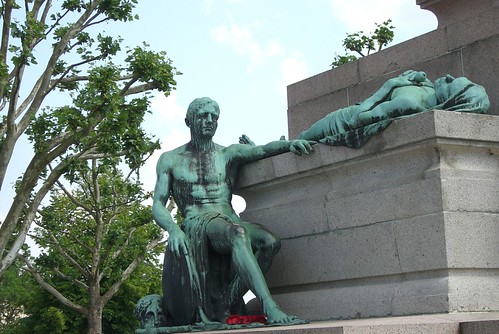A couple weekends ago we took an amazing trip with our professor to Luxembourg, Trier (Germany), Bastogne (Belgium), and Liege (Belgium). This post is just on Luxembourg and Trier
1. Luxembourg City, Luxembourg
First a little geography - Belgium is the pink-purple country just north of France. Germany is in light green, and the little yellow dot below Belgium is Luxembourg. It is incredibly small - the entire city of Tucson, Arizona has more people than Luxembourg country (502,000), and the town of Hamilton, New Jersey (shout out!) has more people than the capital, Luxembourg City (89,000).

We went to see the European Court of Justice in Luxembourg, which is similar (but with great differences) to the US Supreme Court. It has the final say on all issues of European Union law. We actually were able to sit in on a court case on an immigration issue.
The whole group in the courtroom
Laura, Kristen and I. If you look closely on the left, you can see the lawyer from the UK wearing a wig - some traditions never die.
Waiting for the trial to begin, you can see the interpretation booths in the back. The trial was translated live in at least 10 to 15 languages.
In the court case, Germany was trying to kick out a Turkish citizen who had been born and raised in Germany (they have no birthright citizenship) but committed various crimes. The question was over Germany's right to do this within the EU-Turkey agreement (Turkey is not in the EU). When we asked when the case will be decided, our speaker responded, "How long does it take grass to grow?"
Luxembourg is a very modern city and one of the richest in the world, but it also has an incredible history. There are still remnants of a system of forts and tunnels dating back to the Roman empire.
This is the Gelle Fra monument and it marks the sacrifice of Luxembourgers who lost their lives in WWI. Luxembourgers were in fact fighting against each other in the war, as the Germans drafted many for service while others fled to fight with Allied France. The monument shows the slain Luxembourger on the German side and the victorious Allied Luxembourger - but it is not triumphant - he has won the war but killed his fellow countryman. A strong anti-war message...
Luxembourg is so small that it is not uncommon to run into the Duke or Prime Minister on the street. The royal residence:
And of course a picture just for fun, taken by one of my friends in Luxembourg:
2. Trier, Germany
Trier was a key seat of the Roman Empire, and has the largest collection of Roman ruins in northern Europe. Our group examining a skeleton:
This statue below is very well known - this is the original from the Roman era.
Trier was actually the seat of the Roman Empire from appx 306 to 312 under Constantine (who brought Christianity into the empire, among other things). This was his throne room, which is now a church. Wrongdoers would have to march down the aisle and plead with the emperor. Visitors could never turn their back to the emperor and would have to walk out backwards.
The Porta Nigra Roman gate was built around 160 AD and is humongous. It had two laters of defense - when the enemy broke through the first doors of the gate, a second gate would trap them in a small room, and the Romans could then pour fire on top of their trapped guests.
We would all be under water if this picture was taken 1700 years ago, bathing with nobility:
We walked through the complex duct systems, which were manned by the slaves. They served the purpose of holding water, heat, or waste, so we may well have been walking on really old sewage.
We traveled just outside Trier to see an actual Roman ampitheater. Gladiators fought here to entertain the masses. We actually walked through a cage where the lions, tigers, and bears were held before the events. Thanks to some ipods, we had "virtual" gladiator fights in the arena.
Trier is also famous for being the birthplace of Karl Marx, subtly marked by the plaque under the window.
We had fun time going out at night in Trier. We were told about a bar where US soldiers stationed nearby were often spotted, and given the 12 to 5 female to male ratio it was clear where the group would be going. But we all had a lot of fun and saw a lot of people dressed up for carnival.
Tidbits
Luxembourg is officially "The Grand Duchy of Luxembourg." It is the only country in the world "ruled" by a Grand Duke.
Although only 500,000 people, the Luxembourgers have their own language called Luxembourgish. It is a mixture of French, Dutch, and German but unintelligible even if you understand all three (so we were told).




















No comments:
Post a Comment